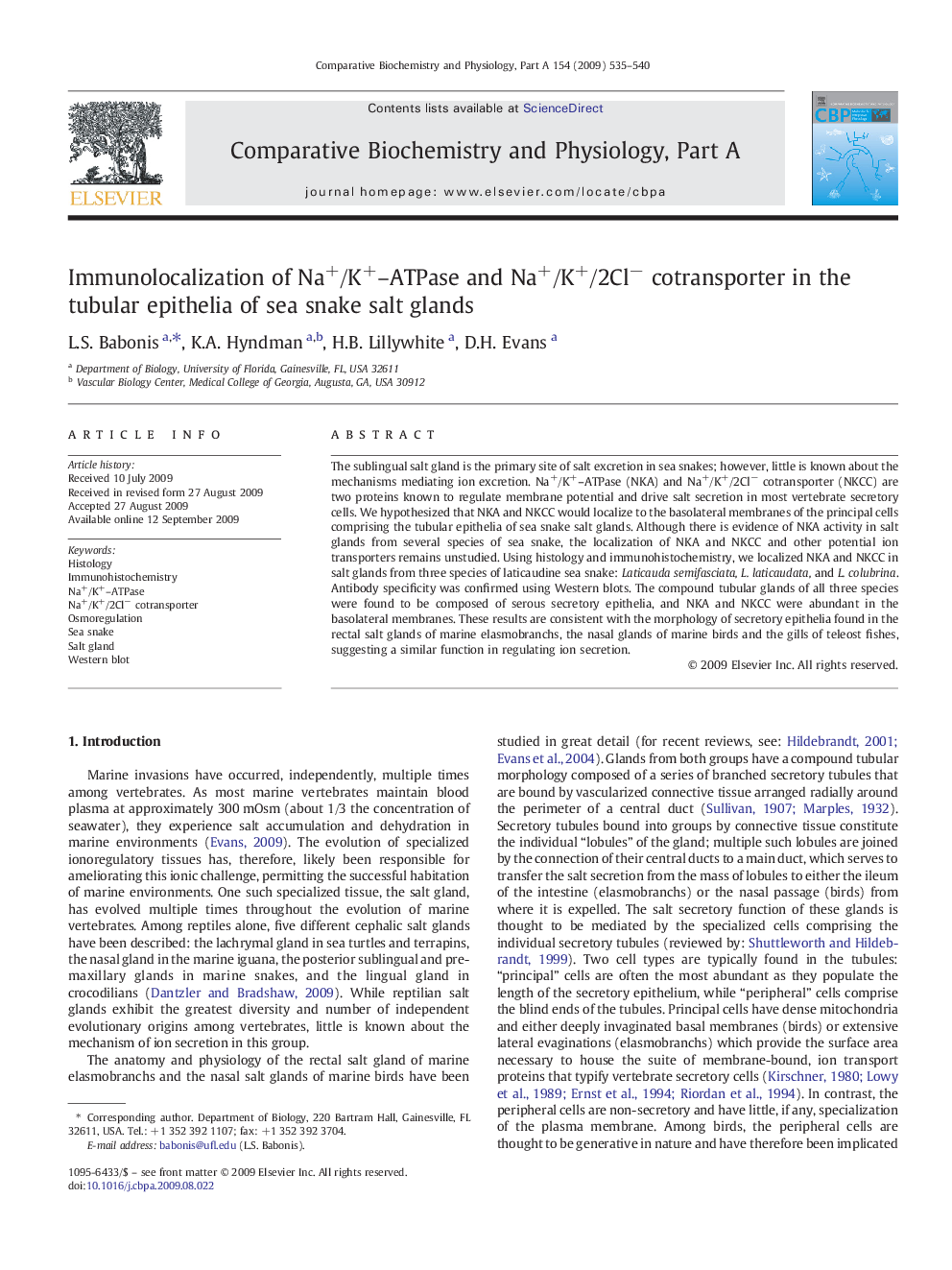| Article ID | Journal | Published Year | Pages | File Type |
|---|---|---|---|---|
| 1973186 | Comparative Biochemistry and Physiology Part A: Molecular & Integrative Physiology | 2009 | 6 Pages |
The sublingual salt gland is the primary site of salt excretion in sea snakes; however, little is known about the mechanisms mediating ion excretion. Na+/K+–ATPase (NKA) and Na+/K+/2Cl− cotransporter (NKCC) are two proteins known to regulate membrane potential and drive salt secretion in most vertebrate secretory cells. We hypothesized that NKA and NKCC would localize to the basolateral membranes of the principal cells comprising the tubular epithelia of sea snake salt glands. Although there is evidence of NKA activity in salt glands from several species of sea snake, the localization of NKA and NKCC and other potential ion transporters remains unstudied. Using histology and immunohistochemistry, we localized NKA and NKCC in salt glands from three species of laticaudine sea snake: Laticauda semifasciata, L. laticaudata, and L. colubrina. Antibody specificity was confirmed using Western blots. The compound tubular glands of all three species were found to be composed of serous secretory epithelia, and NKA and NKCC were abundant in the basolateral membranes. These results are consistent with the morphology of secretory epithelia found in the rectal salt glands of marine elasmobranchs, the nasal glands of marine birds and the gills of teleost fishes, suggesting a similar function in regulating ion secretion.
